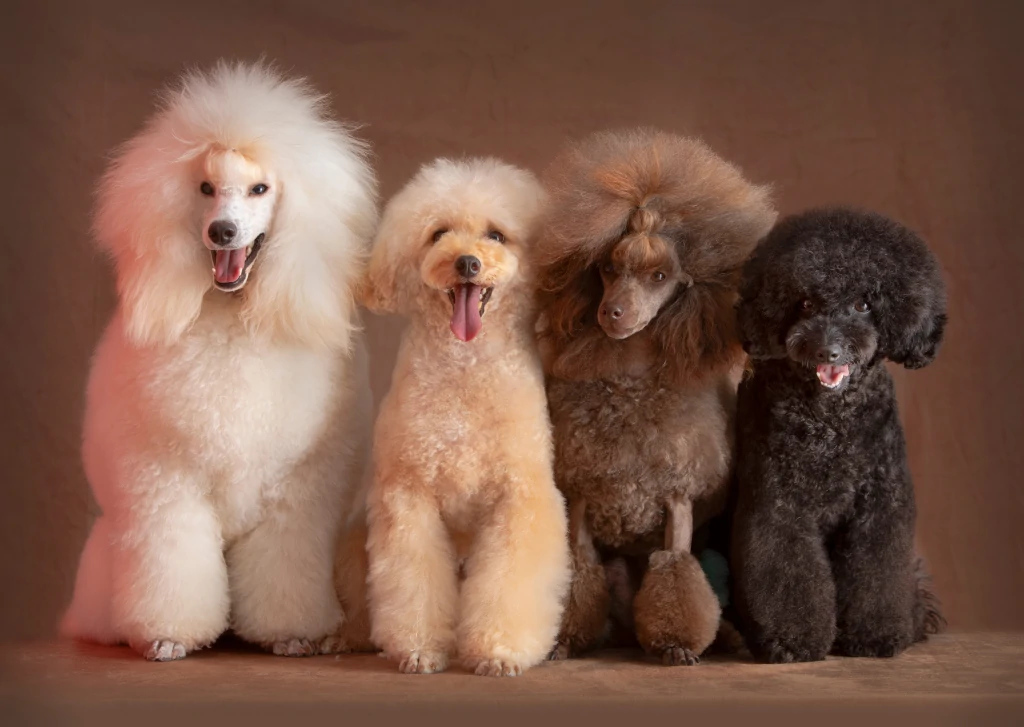
From the glossy curls cascading down their frames to the keen sparkle in their eyes, Poodles are a blend of beauty and brains.
While most recognize them for their sophisticated appearance and iconic grooming styles, there’s a depth to these dogs that goes beyond their exterior. Across the globe, from Parisian promenades to American suburbs, these dogs have not only won hearts but also showcased their multifaceted personalities.
Whether you’re charmed by the majestic presence of the Standard or smitten by the pocket-sized allure of the Teacup, there’s a Poodle for every home and heart.
As we delve deeper into this guide, we’ll journey through the various types of Poodles, each with their unique characteristics and charms.
The Origin and History of Poodles
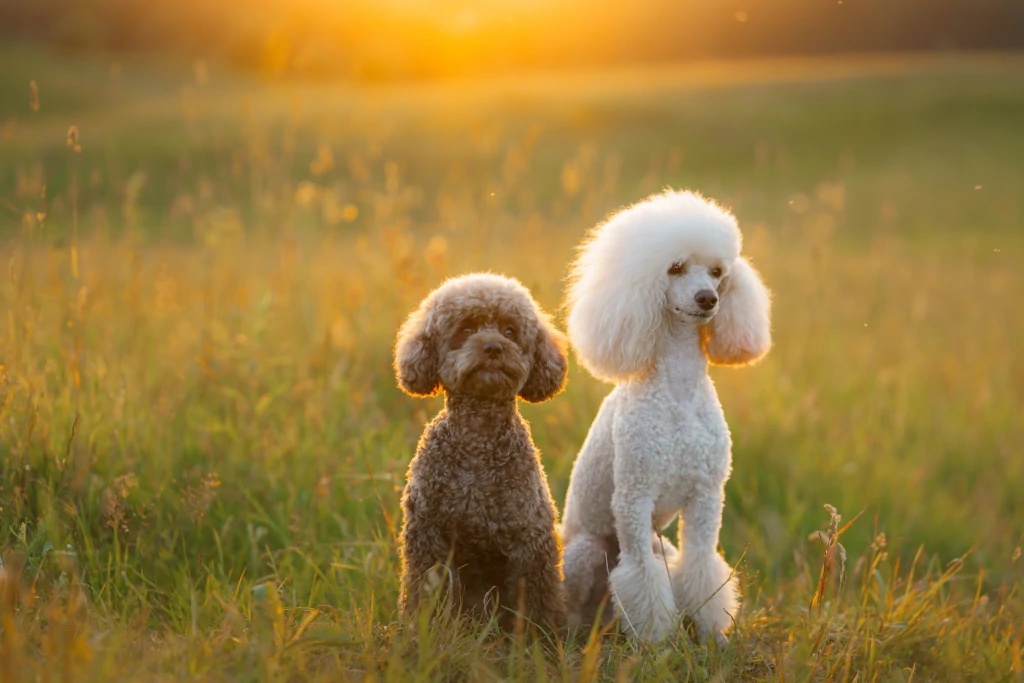
Poodles, with their undeniable elegance and poise, boast a rich tapestry of history that intertwines with various cultures and epochs. Their story, while peppered with regality, begins not in the luxurious laps of French aristocrats but rather along the banks and lakes of Central Europe.
1. Central European Water Dogs
Contrary to popular belief, Poodles aren’t originally French. Their earliest ancestors were adept water dogs used for duck hunting in Germany. The name “Poodle” itself is derived from the German word “Pudel,” which means “to splash” or “puddle.”
2. French Adoption and Transformation
Despite their Germanic roots, it was the French who truly embraced and elevated the breed. Poodles quickly became the national dog of France, known affectionately as “Caniche,” a name drawn from “canard,” the French word for duck.
In France, their curly coats were not just for show but had a practical purpose. Hunters would strategically shave certain areas to enhance the dog’s swimming ability while leaving other parts fluffy to protect vital organs from the cold water.
3. From Circus to Aristocracy
Poodles, renowned for their intelligence and trainability, became stars in European circuses and traveling troupes during the 19th century. Their ability to learn complex tricks and routines drew large crowds. Their popularity in the ring caught the eyes of the nobility, leading to their subsequent adoption into the households of many European aristocrats.
4. Evolution of Sizes
While the Standard Poodle is the oldest of the varieties, breeders, recognizing the breed’s appeal, began developing Miniature and Toy Poodles to cater to city dwellers and those looking for a smaller companion. The Klein (Moyen) and Teacup versions also emerged, bridging the gaps between the established sizes.
5. Modern-Day Reverence
Today, the Poodle stands not only as a symbol of refinement but also versatility. They excel in many activities, from agility courses to therapy work, and, of course, remain beloved family members in countless homes worldwide.
The Different Types of Poodles
The world of Poodles unfolds in a delightful spectrum of sizes, each variation carrying its unique charm while retaining the core Poodle essence. These variations are not mere adaptations for aesthetic pleasure; they evolved, catering to specific needs and preferences over the centuries. Here’s a closer look at the different types of Poodles:
1. Standard Poodle
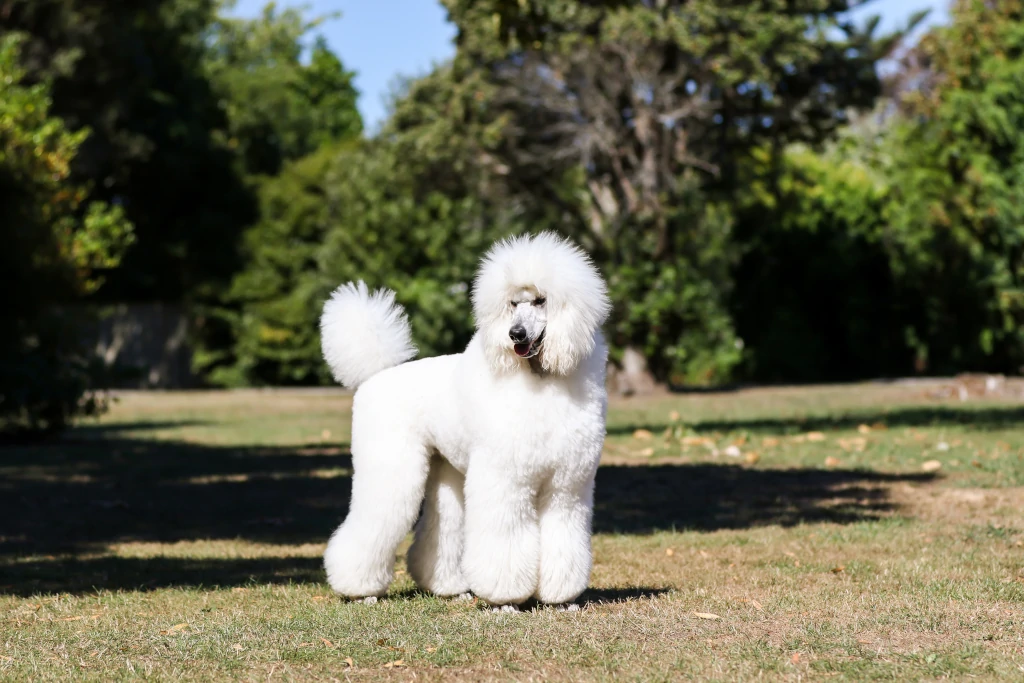
The largest among the Poodle types, the Standard Poodle, was the original water retriever. Its robust stature made it an ideal companion for hunters, aiding in retrieving waterfowl.
As time progressed, their notable intelligence and gentle demeanor saw them serving varied roles, from being soldiers’ comrades in wars to assisting as guide dogs.
The Standard Poodle’s size is typically above 15 inches at the shoulder, and its presence exudes an aura of grace and authority.
2. Miniature Poodle
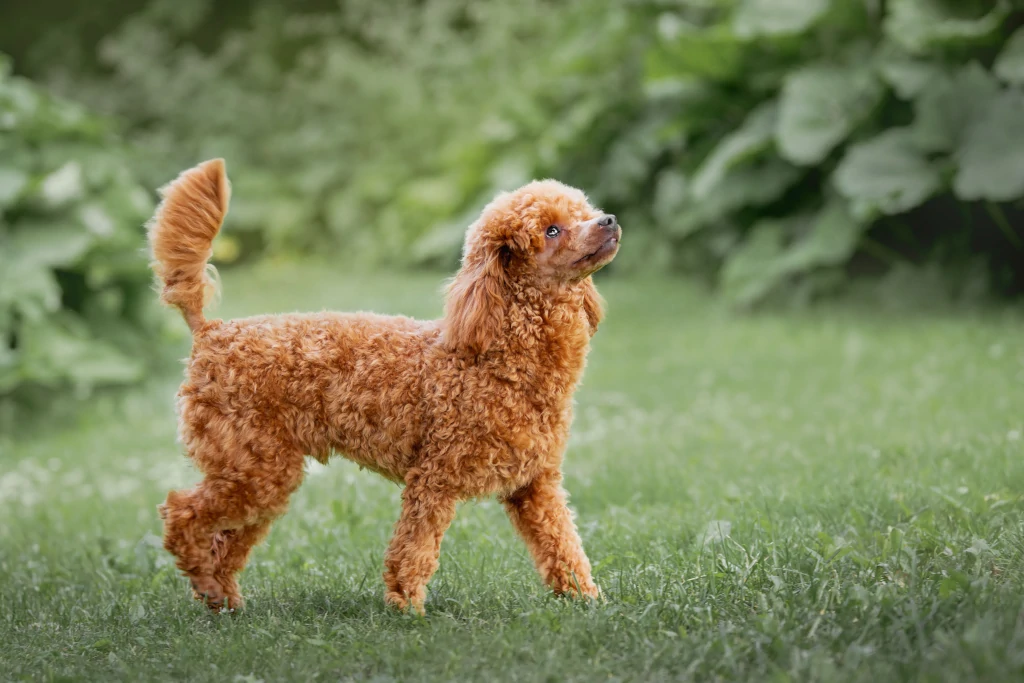
Slightly smaller than the Standard yet packed with an equal dose of vivacity, Miniature Poodles emerged as a favorite among city dwellers.
Ranging between 10 to 15 inches at the shoulder, they are a perfect blend of adaptability and energy. Historically, their size made them popular as truffle hunters, given their agility and keen sense of smell.
3. Klein Poodle (Moyen)

Bridging the gap between the Standard and Mini Poodles, the Klein Poodle, also referred to as the Medium Poodle, is only recognized in Europe.
Standing between 14 to 18 inches at the shoulder, Medium Poodles combine the compactness of the Miniature with the robustness of the Standard, making it an ideal companion for those seeking a moderate size.
4. Toy Poodle
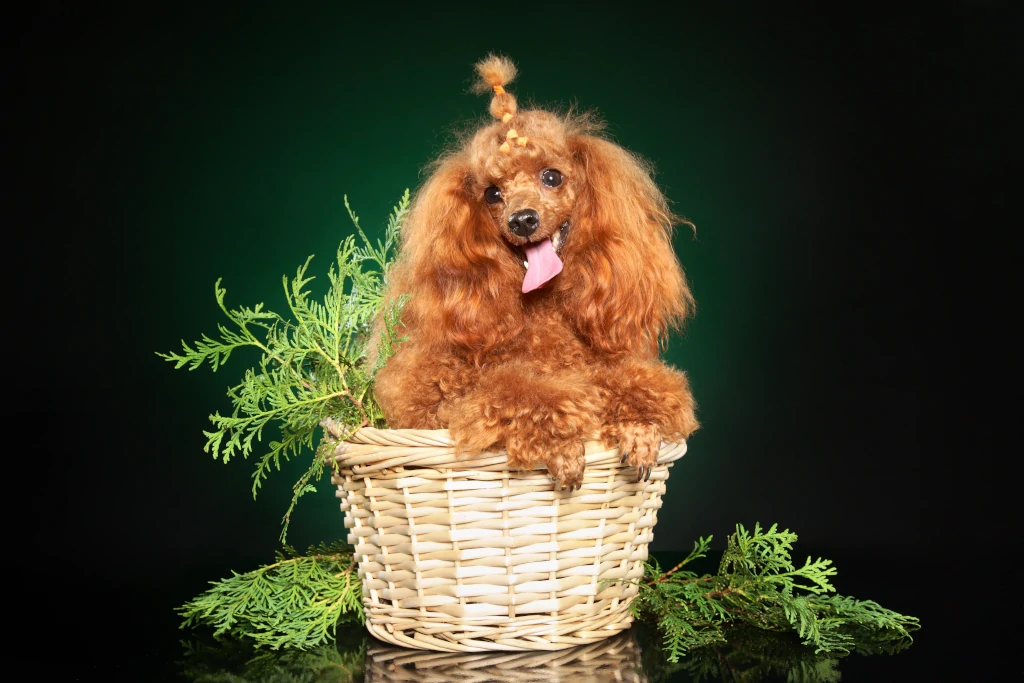
Standing just above the Teacup Poodle, usually between 8 to 10 inches at the shoulder, the Toy Poodle is a bundle of energy and affection. Historically, their size made them favorites among royalty and nobility, often serving as pampered lap dogs in grand courts.
5. Teacup Poodle
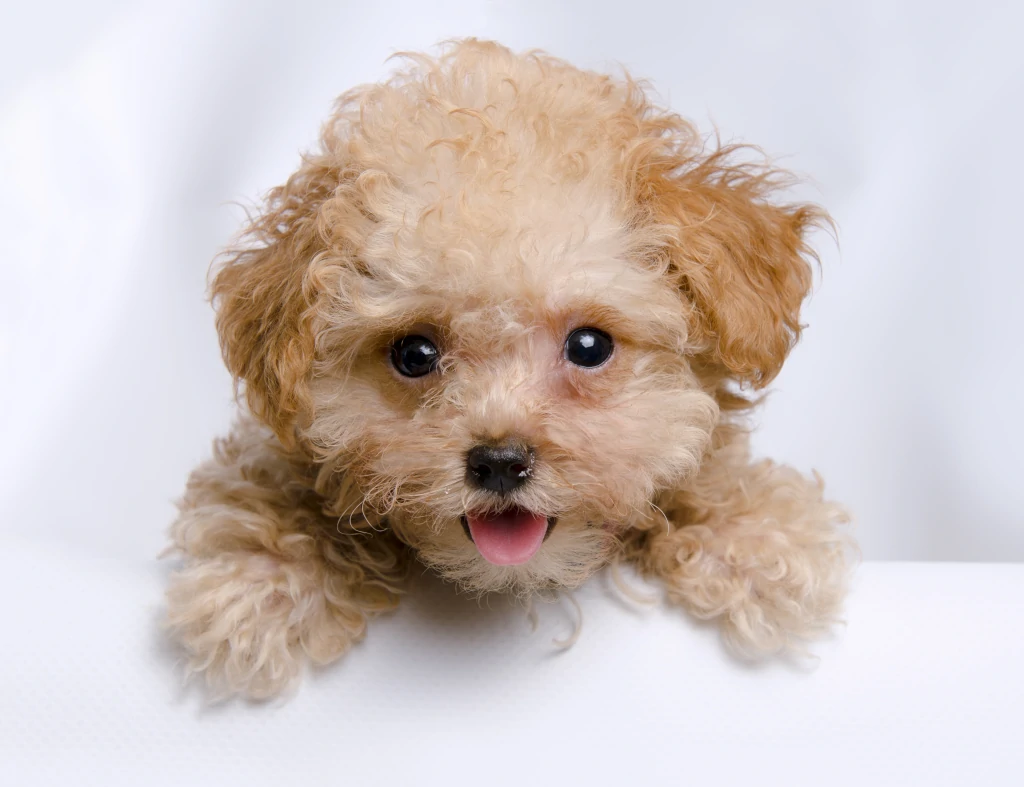
The epitome of cuteness packed in a tiny frame, the Teacup Poodle is not an officially recognized size but has gained popularity due to its pocket-sized appeal.
Typically measuring under 8 inches at the shoulder, they carry all the Poodle charm in a compact silhouette, making them an instant hit among those seeking petite canine companions.
Universal Traits of Poodles
Beneath the diverse spectrum of sizes, at the heart of every Poodle, lie some universal traits that have endeared them to generations of dog lovers. These traits, a blend of nature and nurture, are what define the Poodle’s essence, setting them apart in the vast canine kingdom.
1. Temperament and Behavior
- Intelligence and Trainability: Poodles consistently rank among the topmost intelligent dog breeds. This acute intelligence translates to exceptional trainability. Whether it’s mastering basic commands or performing intricate tricks, Poodles pick up instructions with commendable ease.
- Loyalty and Affection: Known for forming deep bonds with their families, Poodles are fiercely loyal. Their affectionate nature ensures they’re often by your side, sharing moments of joy and providing comfort during distress.
- Social Dynamics: Generally friendly and sociable, Poodles often get along well with children and other pets. While they may exhibit initial caution around strangers, they typically warm up once they gauge the situation.
2. Health
- Inherited Health Traits: Poodles, despite their robust nature, can be predisposed to specific health challenges such as hip dysplasia, progressive retinal atrophy, and some specific skin conditions. Awareness of these potential issues allows for better preventative care.
- Routine Vet Visits: The key to a long, healthy life for a Poodle lies in regular health check-ups. These visits help in early detection and management of potential health concerns.
- Dietary Needs: Maintaining a balanced diet is crucial for Poodles, considering their active nature. Ensuring they receive the right nutrients supports their energy levels, coat health, and overall well-being.
3. Grooming and Maintenance
- The Iconic Curly Mantle: The Poodle’s signature coat is more than just a fashion statement. Regular grooming sessions are essential to keep their hair mat-free and vibrant.
- Cleanliness and Shine: Periodic baths combined with frequent brushing keep the Poodle’s coat in pristine condition, reflecting its natural sheen.
- Ear and Dental Vigilance: The Poodle’s characteristic floppy ears demand attentive care to prevent potential infections. Similarly, maintaining dental hygiene through regular brushings and check-ups ensures a radiant Poodle smile.
Poodles in Hybrid Breeds (Poodle Mixes)
The rise in popularity of hybrid dog breeds has propelled the Poodle to the forefront, thanks to its hypoallergenic coat, intelligence, and friendly demeanor.
When combined with other breeds, Poodles often contribute the best of their traits, resulting in hybrids that are not only charming but also healthily diversified. Here’s a spotlight on some of the most popular Poodle hybrids:
1. Labradoodle (Labrador + Poodle)
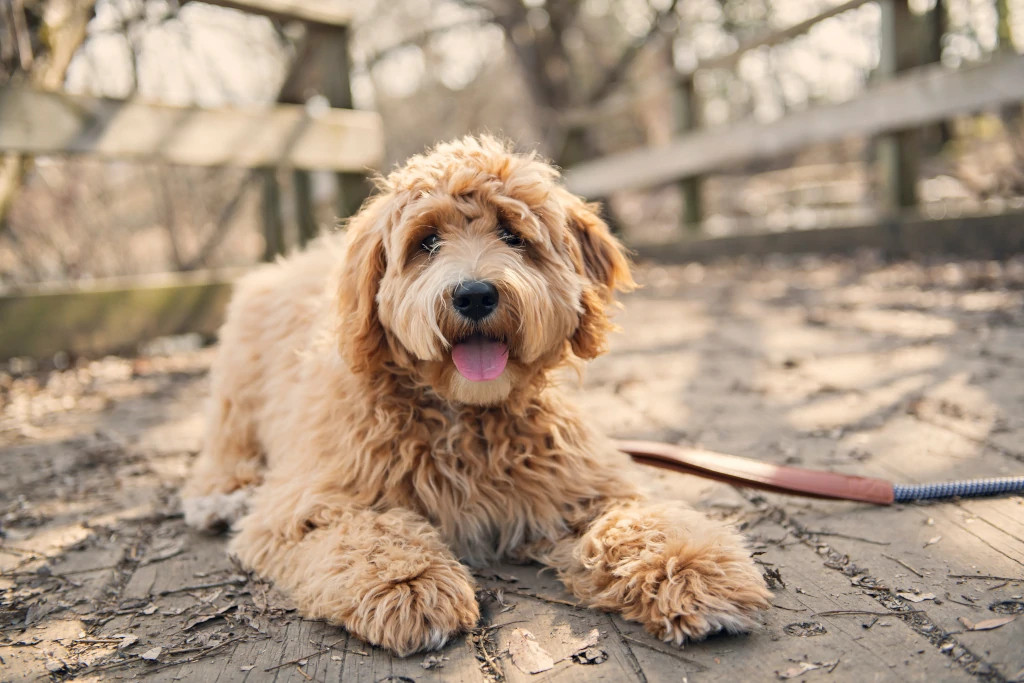
One of the earliest and most recognized Poodle hybrids, the Labradoodle is a blend of the Labrador Retriever’s friendly nature and the Poodle’s intelligence. They are loyal, gentle, and friendly and have become one of the most sought-after family pets.
2. Goldendoodle (Golden Retriever + Poodle)
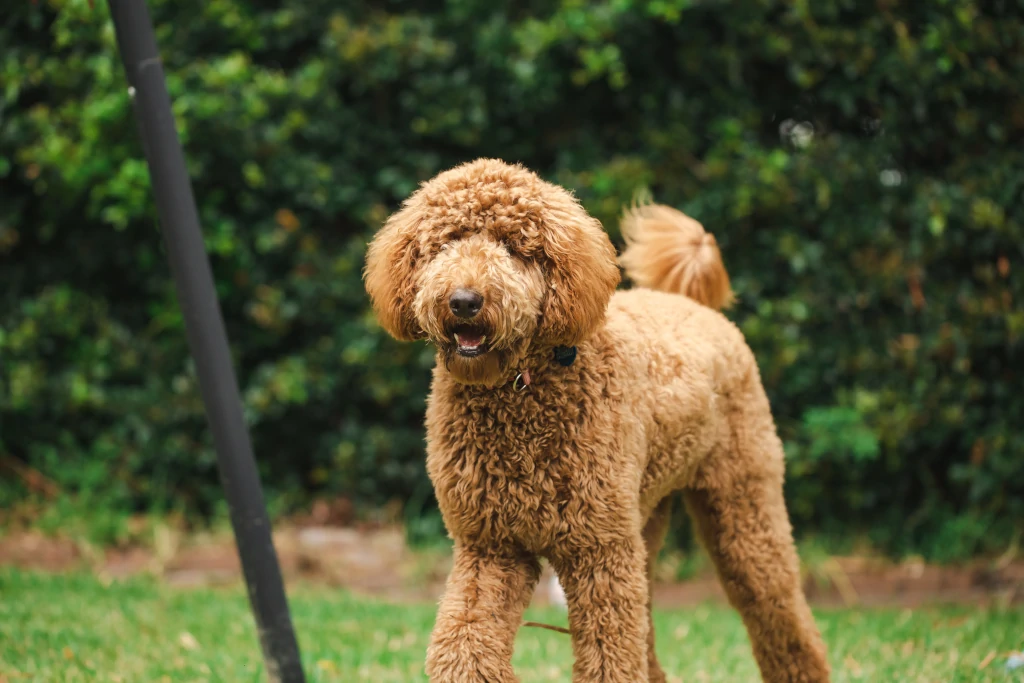
Marrying the gentle temperament of the Golden Retriever with the smarts of the Poodle, Goldendoodles have become darling pets for families, especially those with kids. Their soft, curly coats and amiable personalities make them wonderful companions.
3. Cockapoo (Cocker Spaniel + Poodle)
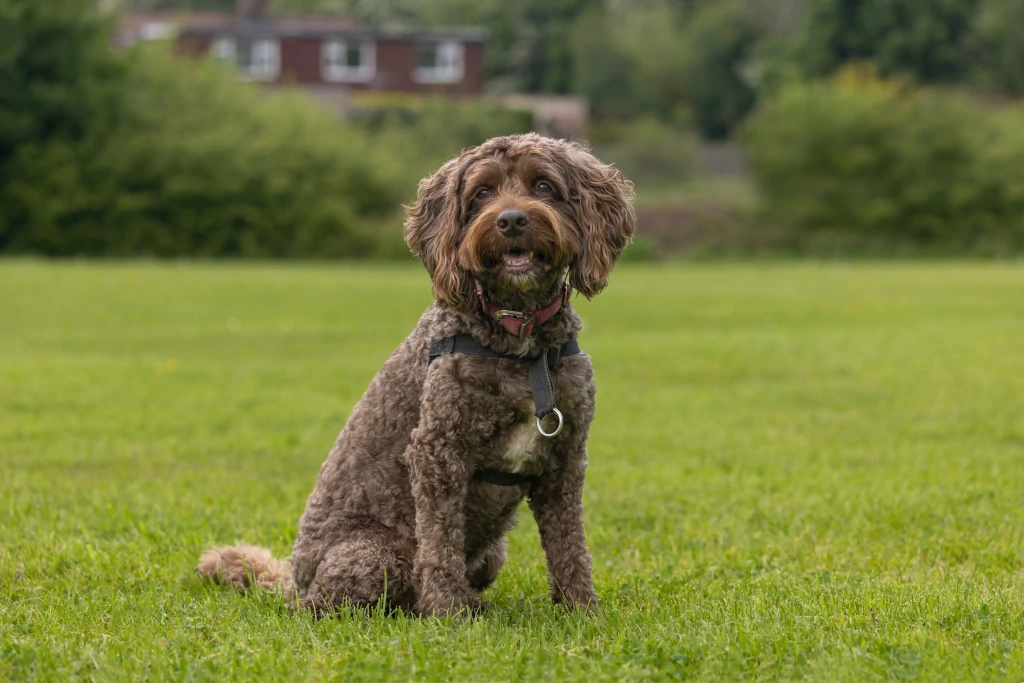
A delightful mix, Cockapoos boast the spirited vivacity of the Cocker Spaniel combined with the Poodle’s wit. Their wavy coats and enthusiastic nature make them great for active households.
4. Schnoodle (Schnauzer + Poodle)
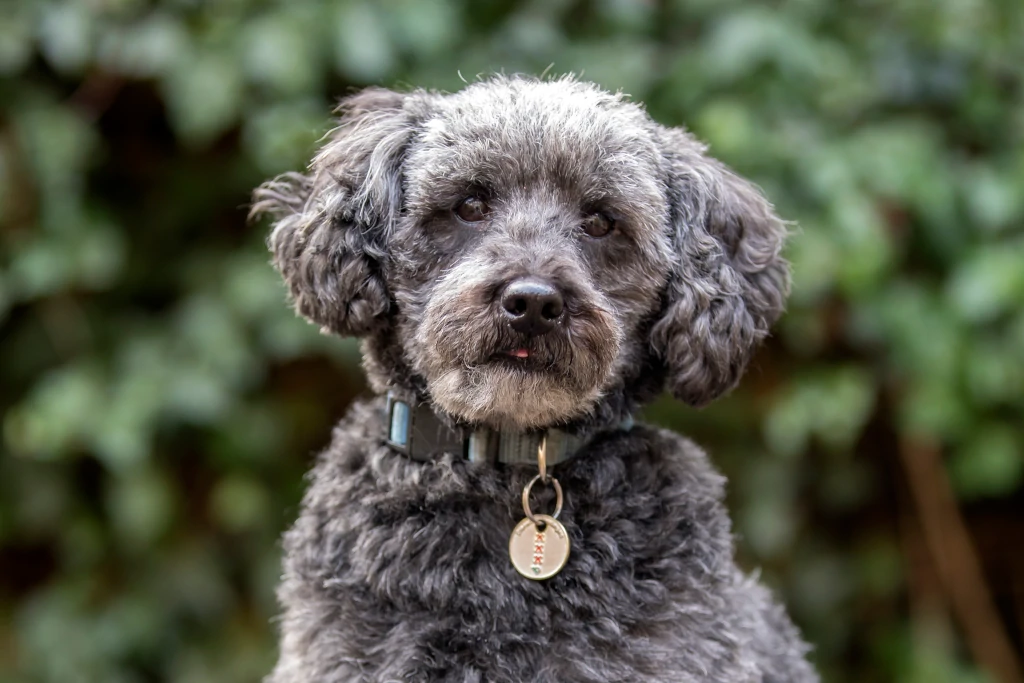
The Schnoodle is a versatile hybrid, varying in size based on whether the Poodle parent is a toy, miniature, or standard. Combining the alertness of the Schnauzer with the Poodle’s affability, Schnoodles are adaptable, often excelling in tasks from watchdog duties to agility competitions.
5. Bernedoodle (Bernese Mountain Dog + Poodle)
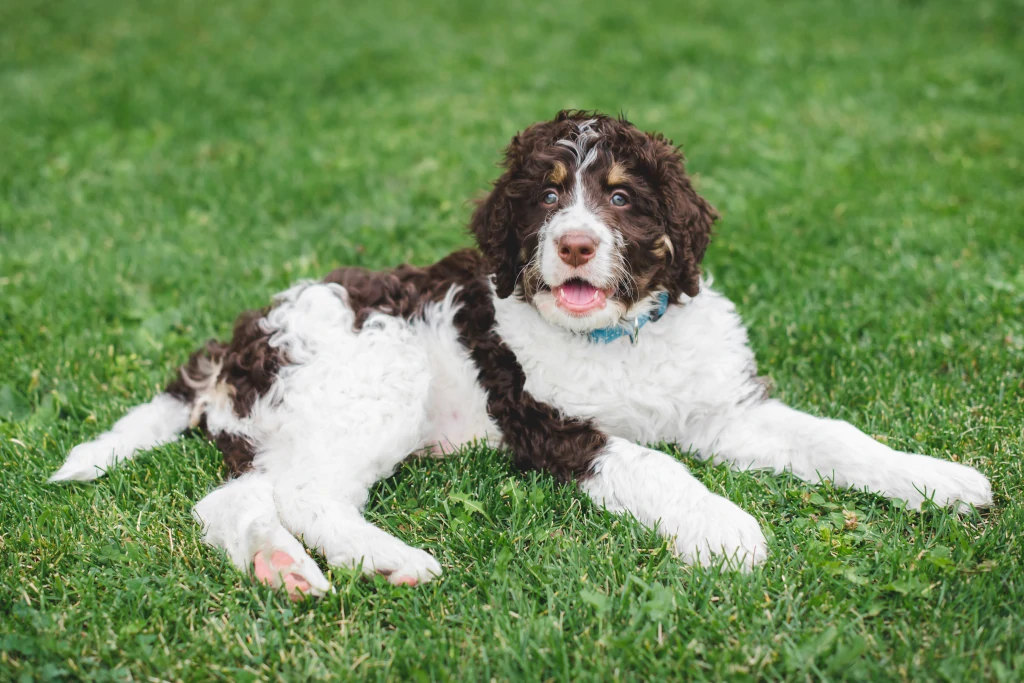
The calm, patient demeanor of the Bernese Mountain Dog pairs harmoniously with the Poodle’s intelligence, creating the Bernedoodle. With striking tri-color coats reminiscent of the Bernese and the curly texture of the Poodle, these hybrids are as stunning in appearance as they are in character.
6. Maltipoo (Maltese + Poodle)
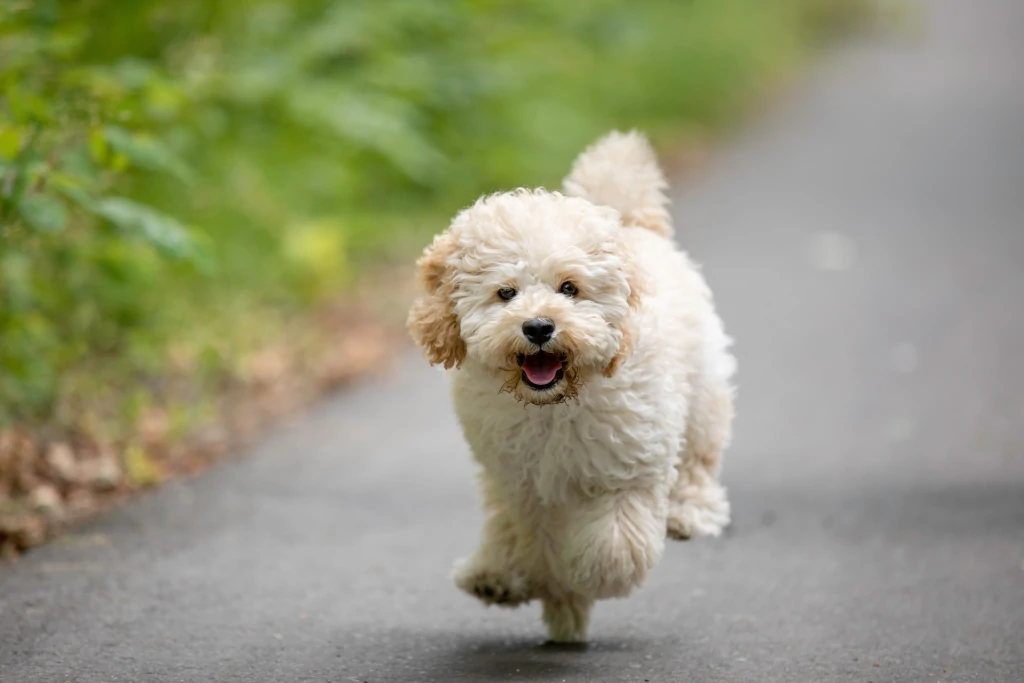
Petite and full of zest, the Maltipoo captures the essence of both its parent breeds. Their small stature, combined with a fluffy coat and an endearing, playful temperament, makes them ideal for those seeking a compact companion.
7. Cavapoo (Cavalier King Charles Spaniel + Poodle)
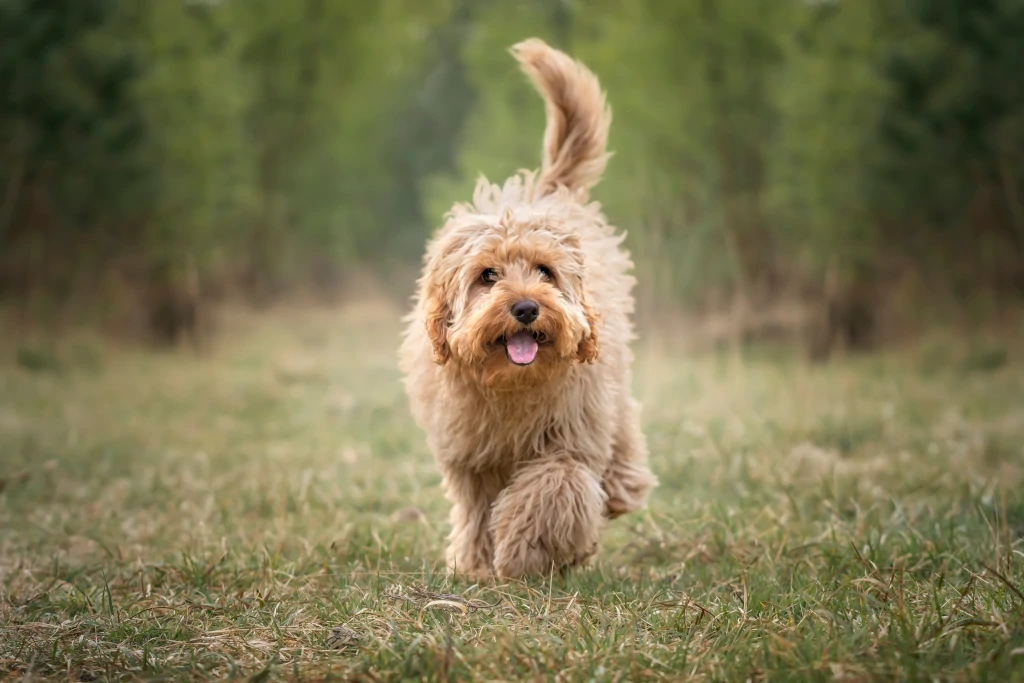
With their expressive eyes and gentle disposition, Cavapoos, also known as the Cavoodle, are the embodiment of loving lap dogs. This hybrid seamlessly merges the affectionate nature of the Cavalier with the Poodle’s intelligence, resulting in a devoted family pet.
Final Thoughts
The captivating allure of the Poodle stretches beyond its curly coat and poised demeanor. As one delves deeper into the breed, it becomes evident that the Poodle’s charm is an intricate tapestry of intelligence, loyalty, and adaptability.
Their illustrious history, diverse sizes, and unmistakable traits have solidified their position as one of the most revered canine breeds worldwide. Moreover, their significant contribution to the world of hybrid breeds underlines their versatility and universal appeal.
For prospective dog owners, embracing a Poodle or its hybrid variant means welcoming a companion that’s equal parts affectionate and astute. Whether you’re looking for a diligent watchdog, an energetic playmate, or a comforting lap dog, the Poodle lineage offers a fit for every preference.
As the world of canine enthusiasts continues to evolve, the Poodle’s legacy remains steadfast. Their unwavering popularity is a testament to their multifaceted character, proving that the Poodle’s charm is timeless.
FAQ: All Types of Poodles
Q1: How many types of Poodles are there?
A: There are primarily three recognized sizes of Poodles: Standard, Miniature, and Toy. However, there are also variations like the Klein (Moyen) Poodle and Teacup Poodle that some consider as distinct sizes.
Q2: Is one type of Poodle more intelligent than the others?
A: No, all Poodles, regardless of size, are known for their exceptional intelligence. The difference in size does not impact their cognitive abilities.
Q3: What's the primary difference between a Teacup Poodle and a Toy Poodle?
A: The main difference lies in their size. Teacup Poodles are even smaller than Toy Poodles, often weighing between 5 and 7 pounds and standing less than 8 inches tall.
Q4. Are Moyen Poodles a recognized size in the US?
A: While popular in Europe, especially in France and Germany, the Klein Poodle size is not officially recognized by the American Kennel Club (AKC). They typically fit between the Miniature and Standard Poodle in size.
Q5: Do all types of Poodles have the same grooming needs?
A: While all Poodles have a curly, hypoallergenic coat that requires regular grooming, the frequency and amount of care might vary based on the coat length and the specific Poodle’s activity level. Regardless of size, regular grooming sessions are essential to keep their coat in optimal condition.
Q6: Is there a significant difference in temperament among the different Poodle types?
A: Generally, the temperament across Poodle types is quite consistent, characterized by intelligence, alertness, and sociability. However, individual personalities can vary, and smaller Poodles might be more energetic or sensitive than the larger Standard Poodle.
Q7: Are there any health concerns specific to a particular Poodle type?
A: While many health concerns, such as hip dysplasia and specific eye conditions, can span across all Poodle types, some issues might be more prevalent in one size over another. For instance, larger Standard Poodles may be more susceptible to bloat, while smaller Poodles might face dental challenges due to their compact jaw structure.
Q8: Which Poodle size is best suited for families with children?
A: All Poodle sizes can be great for families, provided they are socialized well. However, Standard Poodles are often more robust and less prone to accidental injury compared to their smaller counterparts. Always supervise interactions between young children and dogs, regardless of size.

